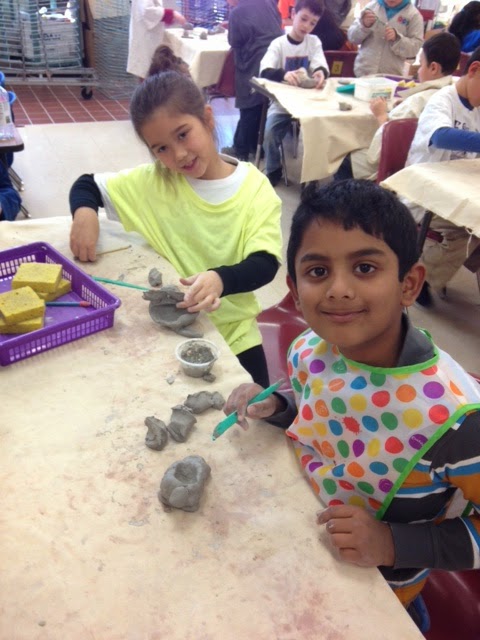Cakes,Wayne Thiebaud 1963,
Oil on Canvas.
Four Cupcakes, Wayne Thiebaud 1971,
Oil on Canvas.
To
wet our pallets, students examined the
painting of American
artist Wayne Thiebaud who often painted desserts using
thick bright colored layers of paint combined with exaggerated shadows. We discussed how there was a “shady”
side and a “sunny side” and
located where those parts where Thiebaud’s paintings. Next, we discussed how drawing
from observation is different then drawing from imagination, because you are drawing what you
see, versus drawing what is in your head.
Students
had several images of cupcakes while they worked to help create their own
cupcake while combining observational and imaginative drawing. We used our newly developed skills of
blending and layering the oil pastels and even added in our own shadows and
horizon line. After
this lesson we used model magic to create a variety of food and looked at
artist Claus Oldenburg’s enlarged food sculptures for some fun
inspiration.
Student Examples

















































